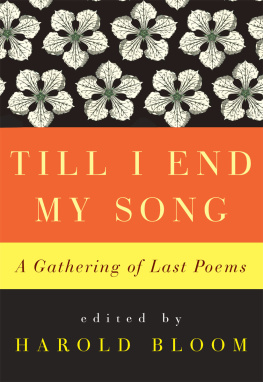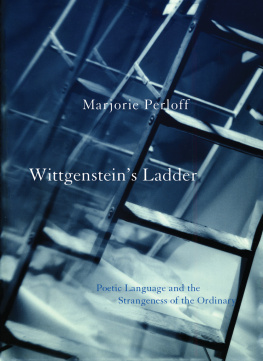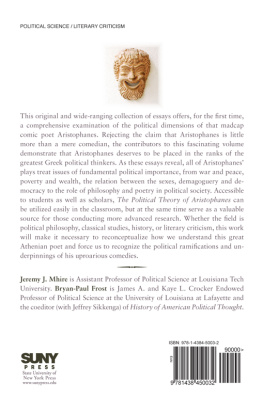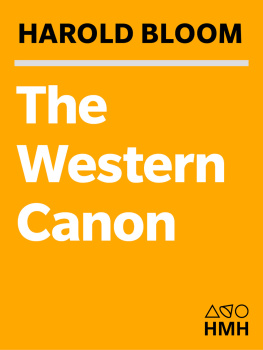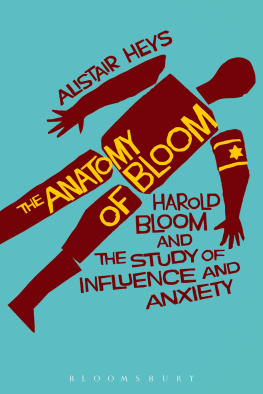Impressum:
Copyright (c) 2013 GRIN Verlag GmbH, alle Inhalte urheberrechtlich geschtzt. Kopieren und verbreiten nur mit Genehmigung des Verlags.
Bei GRIN macht sich Ihr Wissen bezahlt! Wir verffentlichen kostenlos Ihre Haus-, Bachelor- und Masterarbeiten.
Jetzt bei www.grin.com hochladen und weltweit publizieren.
Harold Blooms theory of Poetic Influence vs. Gynocriticism
Dr. Siddhartha Singh-
Assistant Professor
M. M. P. G. College, Kalakankar
Pratapgarh, U. P.
Harold Bloom offers a theory of poetry "by the way of a description of poetic influence, or the story of intra-poetic relationship" (1973 5). The intra-poetic relationship contends with the darker truth that every poet qua poet suffers from the anxiety of influence; a "melancholy principle that makes the poet wonder whether there is anything left at all for him to say. The poetic influence, Bloom proposes, creates anxiety. Therefore, the new poet wants to see the "libraries burning" (1971 131) in order to remove the anxiety.
The new poet or the "ephebe" is locked in an Oedipal rivalry with his castrating poetic father and lives anxiously in his shadow. He finds that everything is already written and he is always belated and a mere imitator. The tradition induces anxiety in him. Any poem by the ephebe is an attempt to escape this anxiety of influence by making certain changes in a previous poem. The poet, if he wants to enter into the tradition of great precursors, must seek to disarm the strength of the precursor. This he can do only if he enters into the tradition from within and writes in a way to revise, displace and recast the precursor poem. Bloom calls this attempt "misprision" or misreading" (1982 69). To complete the process of misreading the ephebe has to pass through six stages of reading or six rhetorical devices (1973 14-16) employed in the poems which are called tropes. These tropes falsify reality in order to help the poet to convince himself of his own earliness. These falsifications (tropes) are used by the poet in the poem to defend himself against the danger of becoming a mere imitator of the early poet, which is the poet's own unconscious urge. Thus the poet's anxiety is to defend himself from a vast line of influence, that is:
... the whole range of relationship between one poem and another, which means that... influence is itself a highly conscious trope that intends to subsume six major tropes: irony, synecdoche, metonymy, hyperbole, metaphor and metalepsis, and in just that ordering. (1975 70)
One may differ from Bloom on the matter of ordering of these rhetorical devices but one can not deny the inter-textual encounters between the two generations of poet in the act of poetic creation; the one trope is seen to struggle against the other. The important contribution of Bloom is that he unravels the complex process of the artistic development of a strong poet, at the core of which is his theory of figures: of literature as figural language and indeed of language itself as constituted of figures. Thus the anxiety is to create new tropes therefore Bloom emphasizes that it is not the later poets personality (quo poet) that is curtailed or sacrificed, even in that in part. It is ethos or rhetorical character that is given away, rather than pathos or rhetorical power (1982 17). Therefore the progress of the later poet is not through a "simultaneous order" rather he makes his progress via admiration, imitation to rejection and displacement, and finally to a crucial "misprision". In the entire process the poet gives away his rhetorical character but wrestles to achieve the rhetorical power in poetry and his place in the poetic tradition. Bloom tends to be structured around the notion of tradition, seen as relation between text and text, but through the tracks of literary history. He knows full well the potentially crushing weight of a tradition that may seem to make overwhelming claims. Thus he glorifies the freedom to have a meaning of ones own, but this freedom is illusory unless it is achieved against a prior plentitude of meaning, which is tradition (1979 3-4). If the poet has strong aesthetic strenth to achieve his meaning and strangeness, a mark of originality in his work, he will win a canonical status; since the "poetic meaning is always concerned with struggle for poetic survival" (1976 106). Thus Bloom not only offers a poetics but also simultaneously emerges as a staunch defender of the western literary canon in which the cycle of achievement goes from strangeness to strange (1994 3). He favours the idea and legitimacy of literary canon to defend it against the forces, especially against the thriving anti-canon theoretical approaches, which argue that there is always some politics of domination and exclusion behind the process of canon formation.
A historical approach, following Foucault Shows that literature has always served political power and that the canon has been a construct for similar ends. So, Foucault would say, let the canon be deconstructed to reveal this power structure and let the literary values be redefined to serve social goals. This almost invariably means the goals of feminists and multiculturalism also. They argue that the process of canon-formation has expressed the interests of the dominant class to the exclusion of women, homosexuals and non-Europeans. Like the Biblical canon the literary canon has been closed to all but dead White phallocentrists, and must be forced open. Bloom lumps together the various critical schools, which derive inspiration from this approach as the School-of-Resentment (it includes Marxist, Feminist, Decons tructionist, structuralist, Lacanian and New Historicist). The profession, he informs us, is now crowded by:
Professors of hip-hop: by clones of Gallic-Germanic theory, by ideologues of gender and various sexual persuations, by multiculturalists unlimited. (Ibid. 157)
Bloom finds that "originality" and "strangeness" make the author canonical. He defines originality in terms of literary imagination, figurative language and its vicissitudes.
Canon, for Bloom, is testing the strength of the will-to-figuration, "the motif for metaphor" as Nietzsche defines:
the desire to be different, the desire to be elsewherethe desire to write greatly is the desire to be elsewhere. (Ibid. 47)
Bloom propagates "aestheticism" as the sole test of "canonicity". His concept of originality leads him to defend the "autonomy of aesthetics" which returns us to "the sovereignty of the solitary soul, the reader not as a person in society but as the deep self, our ultimate inwardness". (Ibid. 10-11)
Thus it is the aesthetic power of a work that compels readability and therefore it breaks into the canon. Bloom here seems to constitute literature as a stable affair. This is what gynocriticism opposes since it shows how the mechanism of patriarchy has always subsided the female writers from the mainstream literature and thus from the established canon as well, therefore gynocriticism seeks a female tradition of writing.
II
Against male oriented focus Elaine Showalter in her 1979 essay, entitled Towards a Feminist Poetics, argues that gynocritics begin at the point when we free ourselves from the linear absolutes of male literary history, stop trying to fit women between the lines of male tradition, and focus instead on the newly visible world of female culture (1986 131). She advocates the need of an academic feminism that can concentrate on the woman as writer to focus the woman
as the producer of textual meaning, with the history, genres and structures of literature by woman. Its subjects include the psychodynamics of female creativity; linguistics and the problem of female language; the trajectory of the individual or collective female literary career; literary history; and, of course, studies of particular writers and works. (Ibid. 128)
Next page


